Electricity meters are used in every home. These are devices for 220 and 380 V, allowing you to record the amount of energy used per month. Based on the data received, the amount that the owner of the house or apartment must pay to the organization supplying electricity is calculated. To find out how much to pay, the user must be able to take readings from the electricity meter. The calculation of electricity by the average monthly consumption is carried out every month on the same date.
Why do you need to calculate electricity
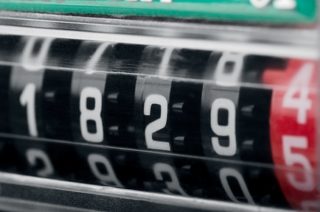
Each month, the owner of the apartment must record the readings from the electricity meter. Values are indicated in kilowatts per hour (kWh). The recorded data must be shown to the staff representative of the energy supply organization, or independently calculate the required amount. The calculation is straightforward; in some meter models, the required values are highlighted in color for convenience. A meter is installed at the entrance to the apartment and after the transformers.
How to notify an organization about electricity consumption:
- Come personally to the service office and report the readings.
- Send data over the internet.
- Call the organization and dictate information over the phone.
- Include readings in the column when paying for receipts.
After that, the required amount is paid.
Taking readings
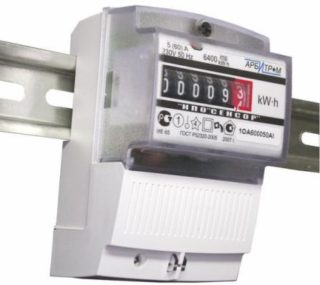
The algorithm for obtaining information from the counter depends on the device model. Old mechanical devices and modern electronic devices are now used. Mechanical devices are single rate, so complex calculations are not required when determining the amount for energy.
How to calculate electricity by a meter from mechanical devices:
- The device has a dial with 5-7 digits. On each reel, the values are from 0 to 9. You need to write down the data to the comma - this is the consumed energy during the operation of the counter.
- The resulting value is transmitted to the network organization as received or subtracted from the previous value.
A number of counters are reset to zero when the maximum value is reached. In this case, before counting the kilowatts by the light meter, add one (1 000001) to the new value (for example, 000001) before the zeros and subtract the previous value.
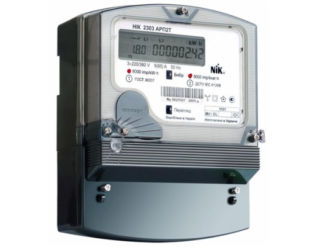
Receiving data from new meters differs significantly from mechanical ones. Electronic metering devices are single-phase and three-phase. The main difference lies in the presence of an electronic display, which can be multi-tariff. To correctly take readings, you need to understand the features of the product. Single-tariff indications are not divided into zones, two-tariff indications are marked as T1 / T2, three-tariff indications are T1 / T2 / T3.
Algorithm for recording readings:
- Press the button on the device body. It is called "Input", "Frame", "PRSM".
- Numbers appear on the screen. You need to look at the signatures of the zones - T1, T2, T3. How electricity is calculated from the average depends on this.
- The main current indicators are recorded, consisting of 5-6 digits, to the point.
- The received data is sent to the appropriate organization.
Single tariff devices display the total energy consumption. Two-rate tariffs are divided into the day zone T1 from 7:00 to 23:00 and the night T2 from 23:00 to 7:00.Three-rate tariffs are divided into the peak T1 zone, which has two time intervals from 7:00 to 10:00 and from 17:00 to 21:00; night T2 from 23:00 to 7:00 and half-peak T3 alternating from 10:00 to 17:00 and from 21:00 to 23:00. The lengths may differ depending on the region where the meter is installed.
Electricity calculation by meter
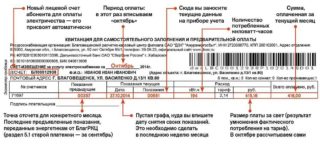
The correctness of the calculations depends on the correct choice of the tariff. It differs for regions, and will also be calculated depending on additional factors: the type of settlement, rates at different times of the day, benefits, etc. You can find out the rate for a specific house in different ways:
- At the service provider's website or office. All data is indicated on the stands. If the tariff increases, information can be found in the press and on the website of the commission dealing with electricity supply issues. On the resource of the department, an online calculator is also offered through which you can find out the fee for a specified period of time.
- Look at the receipt.
It is important to find out information about tariff increases from official sources. This will avoid calculation errors.
Then you can proceed to the calculation of the spent voltage and current. This is done differently depending on the type of instrument.
Calculation of a single-phase meter
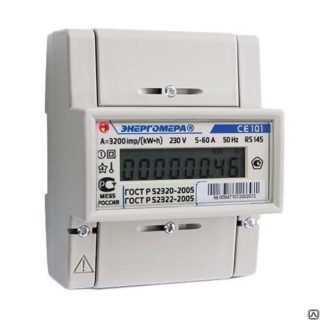
The difference between the values in the current and the previous month is calculated. This value is multiplied by the set tariff.
Example: current readings are 000200, for the previous month 000150. The difference will be 000200-000150 = 50 kWh. Let the tariff be equal to 5 r per kWh. Then the payment amount will be 50 * 5 = 250 rubles.
Calculation of a two-tariff device
Subtraction is performed in the same way, but for each zone separately. Further, the resulting value is multiplied by the corresponding tariff. T1 needs to be multiplied by the peak zone rate, T2 by the night rate, which is lower in cost.
Calculation of a three-tariff metering device
Data is taken from three zones. The values for the previous month are subtracted from them. The corresponding readings are multiplied by the specified tariff.
An example of how to count the light on the meter for a three-tariff device: T1 for the current month is 000400, T2 000350, T3 000550. For the previous month, T1 000380, T2 000300, T3 000490. Then you need to pay for the peak zone (at a rate of 6 p) 000400- 000380 = 000020 * 6 = 120 rubles. Per night (at a rate of 2 rubles) 000 350 - 000 300 = 000 050 * 2 = 100 rubles. For a half-peak (at a rate of 5 rubles) 000550 - 000490 = 000060 * 5 = 300 rubles. All the obtained values must be added: 120 + 100 + 300 = 520 rubles. This amount must be paid for the billing period.
There are several ways to cut costs. First of all, it is recommended to turn on powerful devices at night with a reduced tariff. You should also replace all bulbs in the house with energy-saving ones (LED, fluorescent).
General building needs
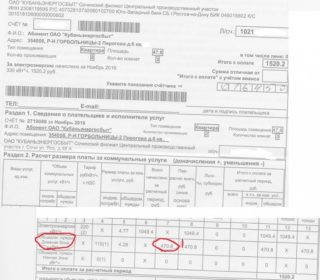
The total value of the amount on the receipt may differ. Additional spending can increase it. This is due to the fact that a fee is charged for ONE - general household needs. These include charges for lighting at the entrance, on the site, lamps in the attic, in the elevator, built-in parking. All the energy that is spent on lighting and house maintenance is divided between the tenants and added to the receipt in the ODN column. The rate for common energy in the house was established by law No. 307 of 2006 and was the same for everyone. Further, after the release of Resolution No. 344 in 2013, the fee is calculated depending on the area of the apartment.
Payment is calculated as the footage of a particular apartment divided by the area of the house. The resulting coefficient determines the amount that the landlord must pay.
What to do if there is no metering device
The calculation of electricity consumption without a meter is done differently. The average indicator in the region of consumption is taken. Further, the number of people living in the apartment should be multiplied by the average and by the local tariff. It is important to note that in this case, the owner of the apartment will overpay for energy, because it does not need to be calculated.It will not be possible to spend the entire proposed amount of electricity, therefore it is more profitable to install a meter.








